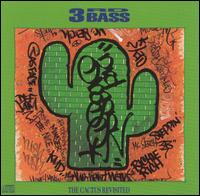It is difficult for me to judge the success of the inaugural YouTube Music Awards (YTMA) because I didn’t get it.
I didn’t get it in the way Rob Ford doesn’t get apologies. I didn’t get it the same way that my Grandmother didn’t get 3rd Bass’ Cactus Album.
I heard the music, I saw the spectacle but, conceptually, I just didn’t get it.
I can understand some of the logic behind launching the event:
– Large Channel Audience:
YouTube Draws 1 Billion Unique Viewers per month, 40% views Music content
– Affiliation with desirable demographic:
YouTube reaches more 18 – 34 year olds in the US than any cable network. (AC Nielsen)
– Deepen Brand Association with Music Videos:
YouTube has launched, amplified, and resurrected the careers of many marquee artists (Korean artist PSY has 2.5 B views, Justin Beiber over 4.4 B views)
– Claim New Territory:
YouTube long passed music television channels as the primary outlet for music video content yet Music Video Awards shows draw huge audiences for traditional television channels. (MTVMVA > 10M Viewers in August)
To fluff the draw YouTube ran a month-long video ad campaign, receiving more than 10.1M views, stating the event would consist of “Live-action Music Videos” produced by the creative director, acclaimed music video and feature film director Spike Jonze.
So, how did it go?
ADAGE compiled these numbers:
– 60 Million People claimed to have voted
– 873,288 unique views reported on the livestream watch page
– 217,244 concurrent viewers 31 minutes in (before KIA’s promotional content aired)
– 180,000 concurrent viewers averaged for final 60 minutes
Looking at this in terms of conventional television metrics, the live streaming of the events was an absolute dud. Consider that the high-water mark for concurrent viewership wouldn’t even register on any of AC Nielsen’s lists.
For comparison, the recent incarnation of the Family Feud draws approximately 6,600,000 viewers per episode and NCIS draws almost 19,000,000.
Key contributors to the low live stream viewership may be connected to the nature of the event in relation to the needs of its audience.
YouTube rose in popularity through its on-demand service and its interactivity, specifically through viewer comments and tie-ins to other social media networks. For the YTMA, YouTube disabled the comment section and pushed the #YTMA for audience members to comment directly on Twitter like a conventional television awards show would.
Perhaps this was a failed attempt to attract more viewership by pulling them in from Twitter, only YouTube did not achieve the critical mass it had anticipated.
Another failing seems to be that YouTube did not push the livestream to its mobile channels – mobile accounts for 25% of total watch time. Combine this with its rigid Eastern US time slot, the YTMAs wouldn’t even show up on the radar of half of YouTube’s user base.
It is very likely that motivation behind this live event is to woo a corporate advertising base, as YouTube attempts to further monetize its channel, but it would be difficult to to call the YTMAs a success by any conventional measure.



